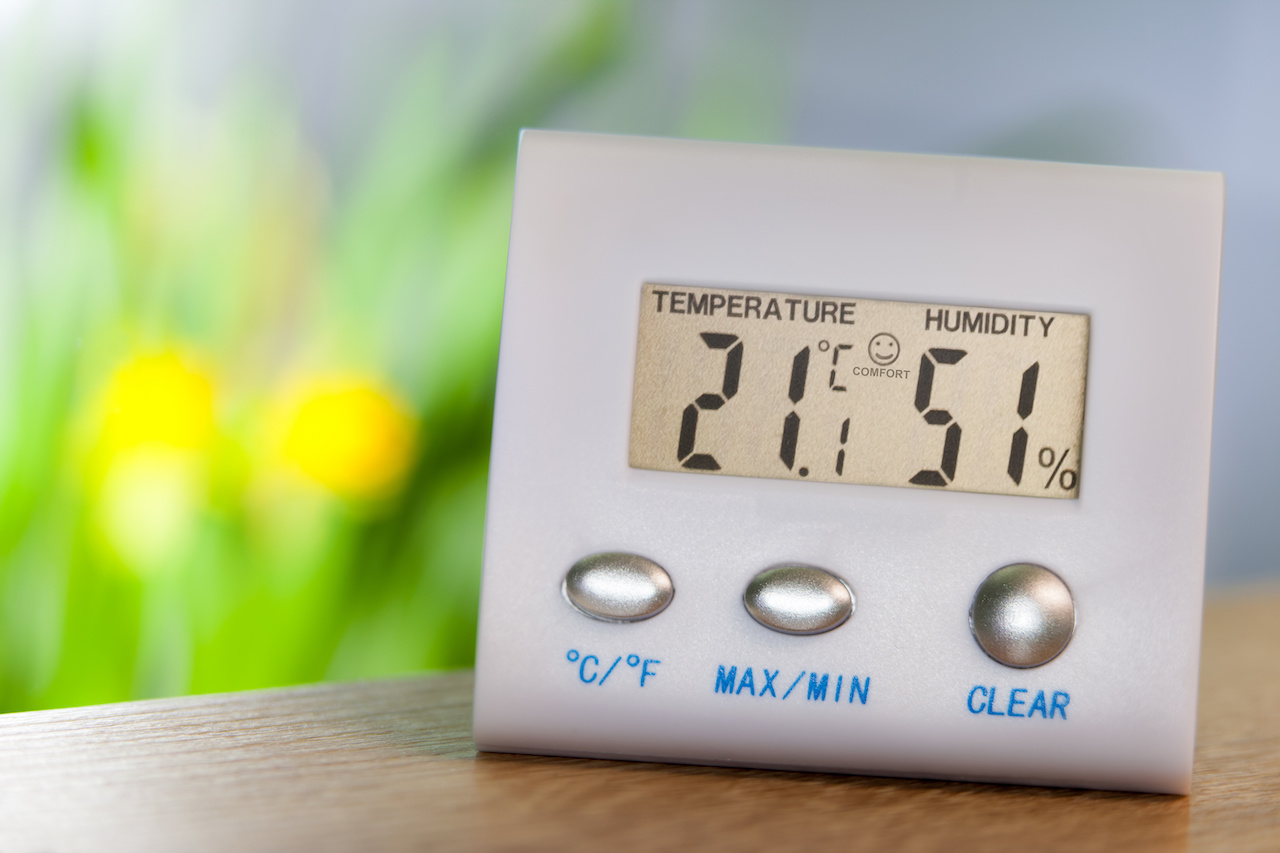Although removing mold is an important task, preventing it before it appears is even more essential. That can be done with a moisture meter, which is a useful device that you can get in any hardware store.
According to calculations, the average home should have a humidity level between 30% and 60%. However, the exact number depends on where you live and the overall state of your home.
Read on to find out more as we do a deep dive into hygrometers and how they can help you prevent mold.
Why Are Regular Humidity Checks Important?
As you probably already know, mold thrives in moist environments. So, the more humid the air in your home is, the bigger the chances of mold appearing on your walls, ceilings, and floors.
One way to prevent mold is to keep your home’s humidity at an optimal level. In other words, the air should be moist enough to be comfortable and safe to breathe but not so humid that it leads to mold growth.
Thus, it is essential to perform moisture checks in your home often. If your home isn’t prone to mold, monthly checkups will suffice. But if it is, it’s better to do a reading on a weekly level.
How to Check Humidity Levels
For those without a humidifier installed, an easy way to check your moisture levels is to get a hygrometer. This handy device takes just a few seconds to do an air humidity check, and you can use the result to make necessary changes in your home. You can get it at any hardware store, and there are many models you can buy at a great bargain for less than $20.00.
If you have a humidifier installed, may have a humidistat that properly adjusts the indoor humidity based on the outside air temperature. This is what causes condensation on windows, etc. The majority of the humidistats are manually controlled by a dial and it’s the homeowner’s responsibility to adjust it accordingly to the outside temperatures. Most have a guideline stamped on them. An upgrade would be to have an HVAC contractor get an automatic humidistat that requires running a wire to the outside of the home to measure the temperature. This will help ensure the home isn’t above the dewpoint. Otherwise, When everyone is talking about a cold snap coming and we’ll be below zero, remember to run downstairs to lower your humidistat so you don’t end up with condensation on your windows, exterior walls, etc.
People without a humidifier, wouldn’t have a humidistat controlling anything, but a hygrometer still helps measure/monitor indoor humidity and is a great idea to have.
When calculating humidity levels, it is pivotal to check every single room in your home separately. If you identify significant variations between them, you’ll be one step closer to determining which room is at the highest risk from mold. Then, you’ll be able to take action and prevent an infestation from occurring.
Optimal Moisture Percentage
Experts say the optimal moisture level is somewhere between 30% and 60%. This number depends on the temperature outside, weather conditions, and your family’s preferences.
For example, if the temperature outside exceeds 50˚ F, you should try to keep your humidity levels below 50%. Generally speaking, as the temperatures increase, so should the moisture levels in your home.
However, to prevent mold growth, the humidity should never exceed 60%. Thus, that is the percentage you should stick to during the sweltering summer months.
What to Do If the Humidity Is Too High?
In case your hygrometer detects humidity levels well over 60%, you can contact a trusted mold remediation team. We offer a free 2-minute assessment online for your convenience. If you choose us, we will inspect your home thoroughly, make any necessary repairs, and ensure you and your family are 100% safe.
Contact us, and let’s put an end to mold growth together!








